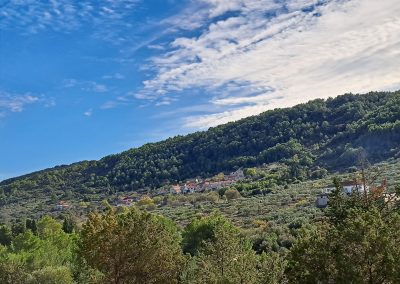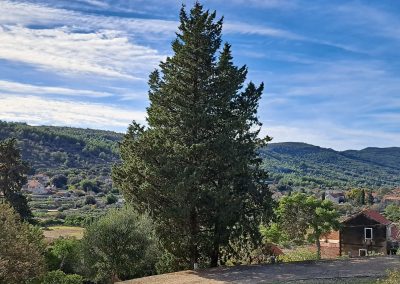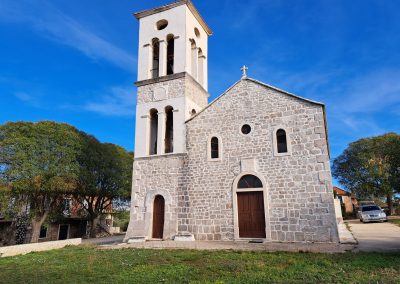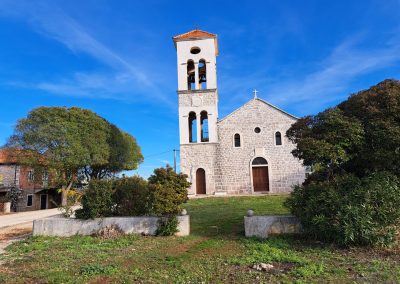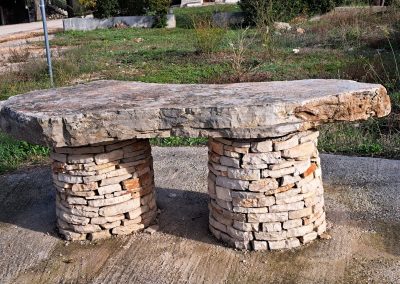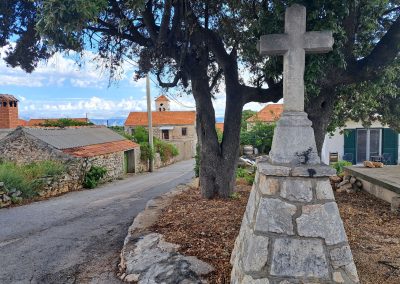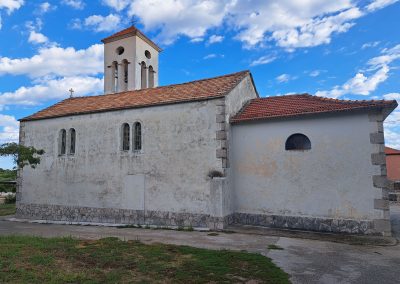Poljica, island of Hvar
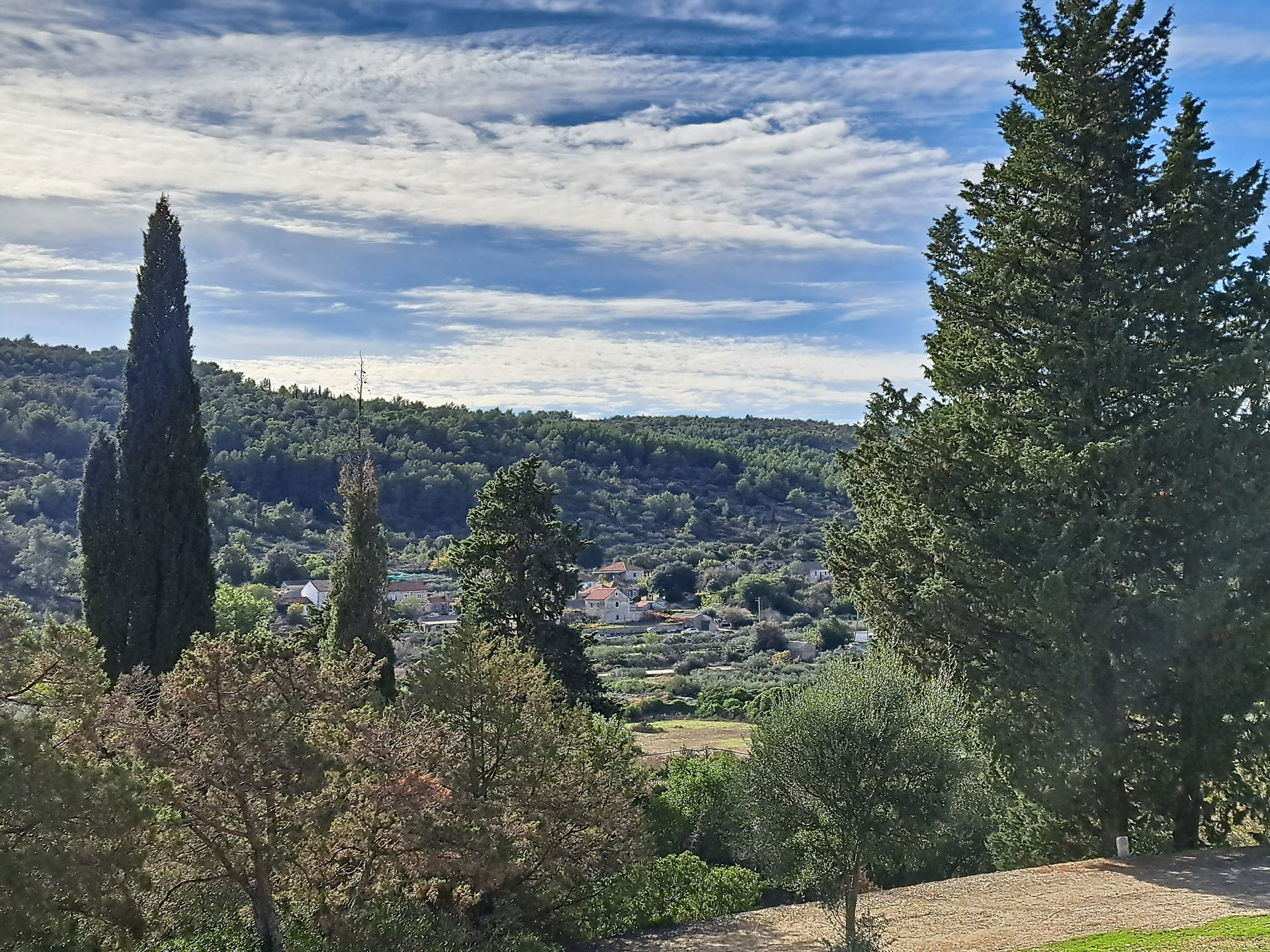
Poljica
Halfway between the town of Hvar and Sućuraj, 43 km from each and 15 km from Jelsa, lies the village of Poljica. It is 2 km from the sea, with asphalt roads leading to the bays of Mala Stiniva and Zečja. Both bays are on the northern side of the island of Hvar, and there are several caves nearby. In 1900, Poljica had 314 inhabitants, but by 2021, the population had dwindled to just 53. The village lacks water and sewage systems. A small church dedicated to St. John the Baptist, originally built in 1579, has been frequently extended and renovated.
An olive oil and lavender oil mill forms the economic backbone of Poljica, as this area, along with Zastražišće located 4 km away, is particularly suited for olive cultivation, alongside the ubiquitous lavender found across Hvar.
Poljica became an independent parish in 1924, separating from Zastražišće. The struggle for spiritual independence began around 1900, symbolized by the erection of a stone cross in Poljica as a sign of the spiritual unity of its residents. The fiery spirit of St. John the Baptist is also reflected in the name of the local football club, “VATRA” (Fire).
The surroundings of Poljica, part of the eastern section of Hvar known as Plame, are rich in prehistoric remains, hillforts, stone mounds, and graves, as well as remnants of pottery and building materials ranging from the Paleolithic and Bronze Ages to Roman relics.
There are plans to build a tourist airstrip in this area, as well as an observatory for stargazing to avoid “light pollution,” similar to the one in Humac.
